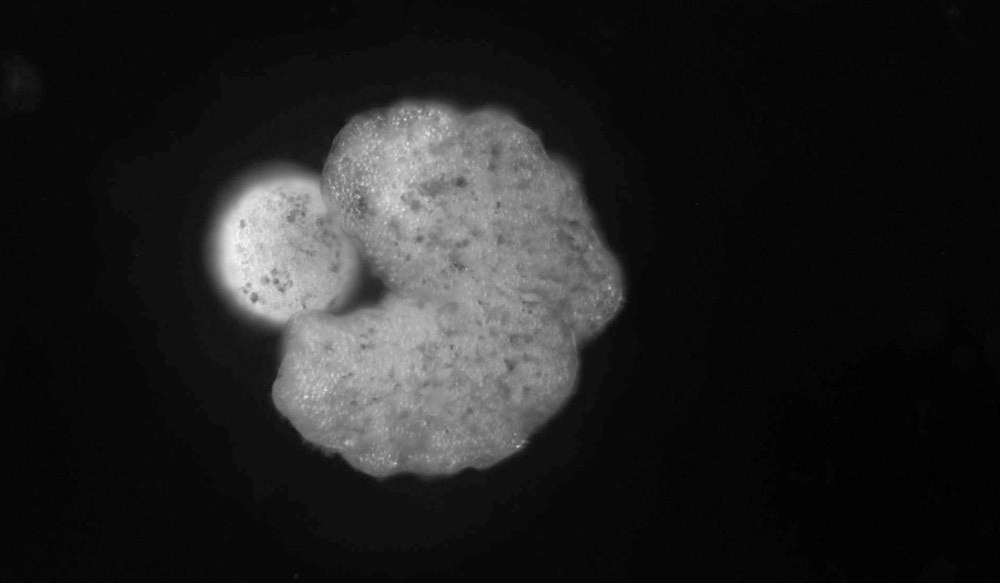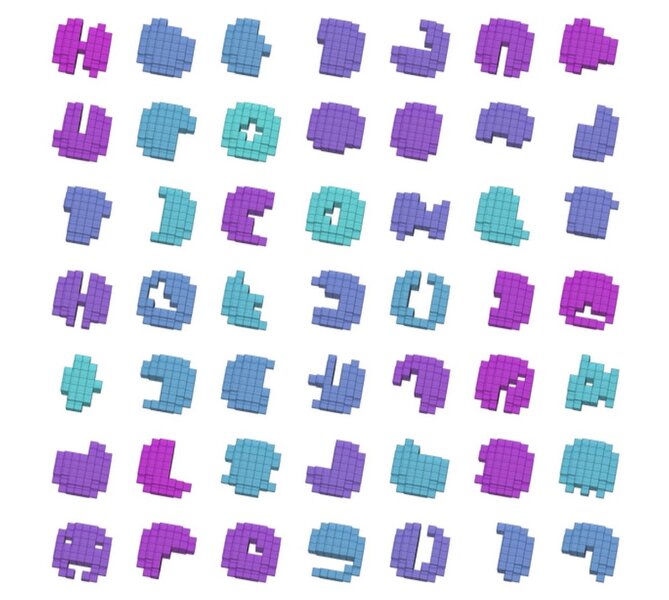Create a free profile to get unlimited access to exclusive videos, sweepstakes, and more!
Watch out, because living Pac-Man robots that can self-replicate now exist
Xenobots are living robots that are made of stem cells, look like Pac-Man, and can self-replicate.

Swarms of micro-bots that can create more bots, which create more bots, which create even more bots? What kind of science fiction movie is this?
You’re not streaming this on Netflix. It has already happened, and while they aren’t androids about to build a robot horde bent on taking over the planet, Xenobots are living (though not sentient) robots that can replicate themselves. Created by Doug Blackiston of Tufts University and his colleagues at the University of Vermont, they were originally frog cells engineered to function on their own. The free-floating blobs then gathered more cells to create duplicates.
An AI originally came up with many bizarre potential designs for the Xenobots. The stem cells used were already found to be capable of gathering other cells. Out of all these designs, the AI had to find which would pick up the most cells efficiently, and it zeroed in on something that looked like a Pac-Man variant. Blackiston, who coauthored a study recently published in PNAS, took living cells and put them together by hand to bring the living bots into being.
“These spheres can move other cells, which can stick together and become spheres as well,” Blackiston told SYFY WIRE. “To build the shape, I compressed the spheres to flatten them slightly, then used a series of micro instruments to sculpt the shape supplied by the computer.”
Xenopus laevis frog cells already clump together on their own and swim around with hairlike structures known as cilia. They form part of the frog’s skin, with the cilia spreading around mucus and keeping pathogens out. As they swim, these clumps push around surrounding particles, and if there are other cells nearby, they can squish them together to create new clumps. The Xenobots go a level beyond that because their unusual shape is optimal for scooping up as many cells as possible (kind of like Pac-Man’s insatiable mouth if it stayed open).
Xenobots don’t actually search for other cells; they just randomly shove them in their “mouths” whenever they run into them. There is a reason the AI chose that shape. It amplifies the frog cells’ ability to pick up more cells so they can self-replicate when they’ve gathered enough. Each Xenobot is made of 3,000 cells, and while it was difficult to keep the system reproducing when the bots were first developed, the upgrade in shape made it possible for them to keep forming generation after generation. No other living thing has ever been observed doing this.
“The interesting part is these cells are doing their normal function, we've just 'rearranged' them to build something different,” said Blackiston. “When you build these small forms, the beating hairs generate enough force to move them so they can keep collecting more cells."
This might be one of the most incredible examples of the plasticity that stem cells are capable of. Removed from the frog, they went ahead and did whatever they wanted, and what they created was nothing even close to the skin of an amphibian. These cells were able to redefine themselves and their function without resorting to what they would do on a frog. They don’t need to be prompted to replicate, but just go about doing it for some reason. Even though the scientists had the full frog genome, nothing in it could have possibly prepared them for this.
These things are just cool. They look like Pac-Man, behave like a self-replicating robot swarm, and somehow realize when they are free from the frog and can do their own thing. Blackiston looks forward to a future where xenobots could possibly be used in regenerative medicine. There are already other amphibians — such as salamanders — that can regenerate parts of their bodies that are lost to predators. Maybe these modified frog cells could eventually do the same.
“We're also using bots to understand the ways cells communicate to form a shape, space out evenly, and differentiate from stem cells,” he said. “These processes are key to regenerative medicine, where scientists hope to direct tissue to form a specific organization and shape."
That is much more than the video game version of Pac-Man can say for himself.



























